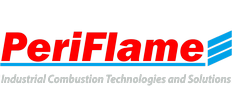Scientific fundamentals and research
Scientific article titled “The New Physical Interpretation of a Flame Front Thickness”, presented by Periflame’s Director of Engineering Iurii Kryzhanovskyi and is published in the “Journal of Energy and Power Sources”, Vol. 1, No. 1, 2014 in July 31, 2014
Abstract
The new interpretation of the concept of the thickness of a normal flame front and interconnection between the flame front propagation rate, and the specific volume intensity of combustion was presented. Independence of specific volume intensity of combustion upon flow regime has been shown. The new interpretation of the Peclet number for flame was tested. Test results allow drawing a conclusion about existence of an ordered internal structure of a flame front and about new regularities. Researches of the laminar flame front structure for the purpose of its detailing have been made. The measurement of СО2 and NO concentrations and temperatures within a laminar flame front of methane-air mixture at various initial temperatures and excess-air factors has been fulfilled. There was revealed a necessary condition for existence of a self-spreading wave of reaction defined by view of a concentration profile. It was revealed hydrogen burns out as if it was in the free molecular state at burning of hydrocarbons. Explanation of these results demands improvement of a nowadays understanding of combustion process.
